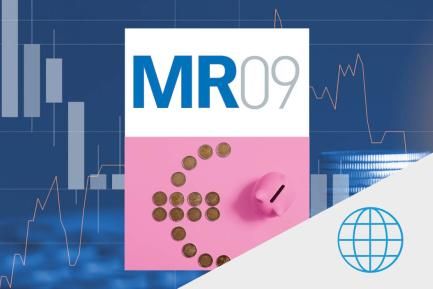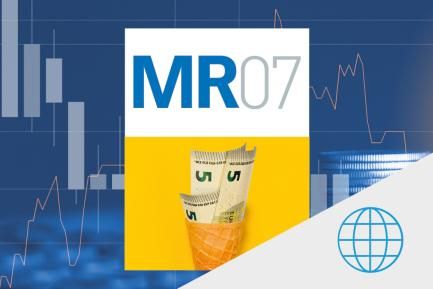The vaccination campaign is advancing, although the global recovery is moving at a slower pace

The latest indicators show that there was a moderation in the speed of recovery in the first half of the year, whilst inflation stands well above central banks’ targets in most cases. However, the economic revival is not compromised, as most economies continue to register high growth rates. The evolution of the pandemic remains one of the key determining factors for the economic outlook, so we must pay close attention to the progress of the vaccination campaigns. Developed economies are leading the way, although they are not all progressing at the same pace either: Europe is now the star student (with 62% of the population fully vaccinated), while the US has stagnated since the summer (55%). Among the major emerging economies, China is leading the process (more than 70% fully vaccinated), well ahead of Turkey (51%), Brazil (41%) or Russia (29%). The good news is that, unless new, more aggressive variants emerge, herd immunity is likely to be achieved globally in the summer of 2022, either through the vaccines or through people acquiring immunity after overcoming the disease.

The sharp rebound in consumption, especially in manufacturing, coupled with the Zero COVID policies adopted in China and other Asian economies (which are central to the large global manufacturing chains), is generating supply problems of such a magnitude that they have forced production to slow down, or even to stop altogether, in some industrial sectors (the automotive, computer and construction industries are among those hardest hit). This distortion is also driving up production costs. This is a dynamic still in its early stages and it could intensify in the future, which in turn could exacerbate one of the most significant risks right now, namely the inflationary stress that is already apparent in consumer prices in many economies.

US
After exceeding pre-pandemic GDP levels back in Q2, the outlook for Q3 remains positive, albeit with slightly lower growth rates (around 1.4% quarter-on-quarter). On the one hand, private consumption will lose momentum once the impact of the stimulus cheques distributed in Q2 2021 has been diluted, the extra unemployment benefits come to an end and the easing of mobility restrictions slows in the face of the rise in cases of the Delta variant. On the other hand, businesses will have to deal with the aforementioned supply shortages, as well as the difficulties in filling job vacancies. In fact, in this latter area, some 85% of US business owners report having difficulties filling their vacancies. This labour shortage, however, should dissipate as the extra unemployment benefits come to an end in September. In this context of high demand and supply disruptions, US inflation declined slightly in August, although it was still at historically high levels. In particular, the headline CPI advanced 5.3% year-on-year in August, slightly lower than the previous month (−0.1 pp) and in line with market expectations, while core inflation stood at 4.0%, 3 decimal points below the figure for July. Looking ahead, we project a gradual moderation in inflation as accumulated savings are absorbed and the supply-side distortions are alleviated. Nevertheless, we continue to see a substantial risk that inflation will remain at high levels.

By the time this Monthly Report is published, part of Biden’s proposed measures, focused on improving the country’s classic infrastructure and equipped with a budget of 550 billion dollars, should have been given the final approval (although the first vote on the matter had been delayed at the time of writing). Moreover, in the short term, Congress must approve some sort of debt ceiling agreement, since by mid-October the country’s Treasury could run out of funds to service its payments (see the Focus «The US debt ceiling back in the spotlight» available on the website). Finally, the details of numerous measures proposed by the Biden administration under The American Jobs Plan (which deals with infrastructure) and The American Family Plan (with a social approach) need to be defined (see the Focus «Fiscal activism in the US: a lot of noise and little substance?» available on the website).


EURO AREA
The euro area has significantly accelerated the vaccination roll-out during the summer. For instance, in Portugal and Spain around 80% of the population has now received the full dose. This explains why the Delta variant is causing less damage than in other areas of the world in terms of economic activity. However, we must monitor the negative impact due to the problems in global supply chains, especially in countries where manufacturing plays a significant part in their economies, such as Germany (22%). In fact, according to Eurostat, the net percentage of euro area companies in the sector that acknowledged experiencing production constraints in Q3 2021 due to a lack of materials and machinery reached 40%, the highest ever figure in the series’ history (35 years). At the same time, there appears to be a growing shortage of labour, another factor that could have a negative impact on supply.

These supply problems are affecting the main confidence indicators, which fell again in September in most cases. Nevertheless, they still all remain at fairly high levels and suggest that growth in Q3 will be higher than in Q2. It will not be until Q4 that growth will significantly decelerate, mainly due to global supply problems, although it will still be well above the long-term average trend. Also, the risks of a more abrupt slowdown caused by bottlenecks cannot yet be ruled out. In this context of buoyant demand and emerging supply problems, inflation has surged to over 3.0%, also pushed up by the sharp rise in electricity prices, which have been driven by the prices of gas and EU emission rights. These factors will persist over the coming months, so inflation will remain around those levels for the remainder of the year, although we expect it to decline to around 2.0% during the first half of 2022.

EMERGING ECONOMIES
The country in which the pandemic originated and the first one that appeared to have it under control is implementing a «zero tolerance» policy with the Delta variant. These policies have exacerbated the distortions already apparent in global supply chains, and they will also restrict growth in Q3 2021. Another risk factor for the coming months is Evergrande’s delicate financial situation: it is the country’s second-largest property developer, with assets equivalent to 2.0% of China’s GDP and liabilities exceeding 300 billion dollars spread across 128 banks and more than 121 non-banking institutions. Nevertheless, the risk of global financial contagion resulting from a potential default is estimated to be very limited, given that Chinese investors hold more than 80% of the firm’s debt. Moreover, the Chinese authorities have already begun to act to reduce the financial stress and to secure the flow of credit (the central bank has injected some 17 billion dollars), and they will most likely work towards achieving an orderly restructuring. Although the risks to short-term growth have increased, growth of around 8% in 2021 is still feasible.

The latest data suggest that growth in most of the emerging Asia region will experience a marked slowdown in Q3, especially in countries of Southeast Asia, as they are lagging far behind in the vaccination process and are also highly dependent on international tourism, which is still at a low point. The exception in Asia will be India, which will see a major rebound in activity in Q3. Emerging Europe will also slow in Q3, after a very dynamic Q2, mainly due to the cooling of activity in industry, which is heavily affected by the global supply chain problems. On the other hand, much of Latin America will see its growth intensify in Q3 following a fairly satisfactory Q2.



